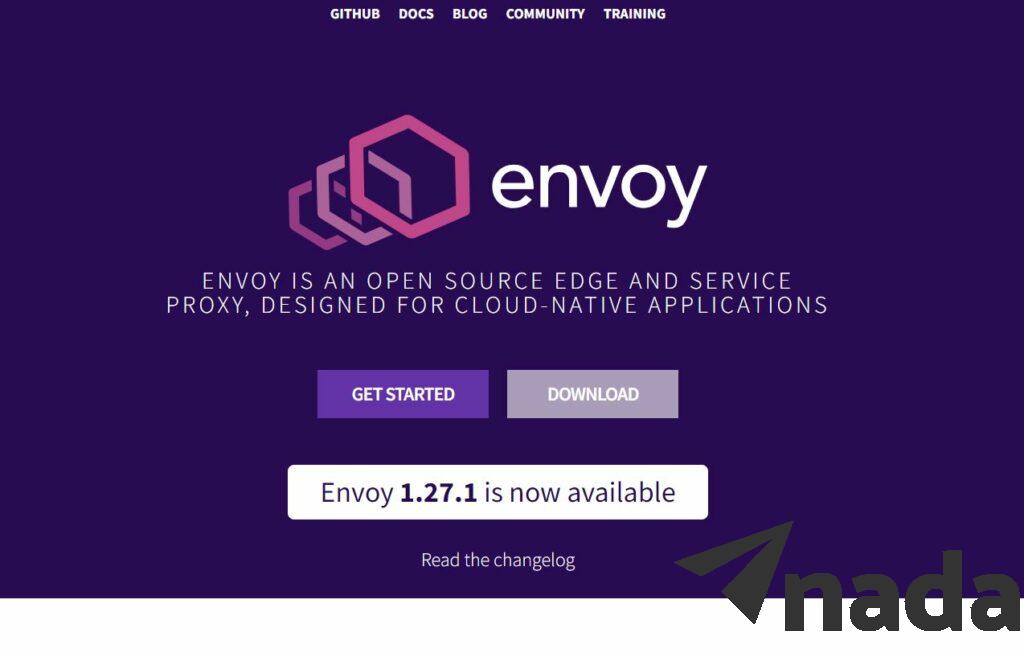Proxy & VPN
Envoy Proxy: Features, Operation, Applications, Limitations
Envoy Proxy is an essential tool for managing communication between applications and services within a distributed architectural model. It offers a wide array of powerful features, including load balancing, traffic management, security enforcement, and system data collection and analysis. If you are seeking a tool to effectively manage your applications and their services, please continue reading with Getnada this article to gain a deeper understanding of this versatile tool.
Envoy Proxy: What is It?
Envoy Proxy is an open-source distributed proxy server built in the C++ programming language. Initially, this proxy server was developed by Lyft, a car-sharing service company, in 2015. It later became an open-source project managed by the Cloud Native Computing Foundation (CNCF) in 2017.

The design of this tool aims to address network and management-related issues when deploying applications and services in a distributed architectural model. It can be used as an L4 or L7 load balancer and is designed for building large distributed service meshes as well as microservices.
As of now, this tool is used by many large companies and corporations, including Google, Netflix, Twitter, Uber, Airbnb, and Microsoft. Furthermore, Envoy Proxy is also a core component of many popular service mesh platforms such as Istio and Linkerd.
Envoy Proxy‘s Working Principle
Envoy Proxy serves as a crucial middleware layer that enhances performance, ensures security, and efficiently manages distributed communication among components in a distributed architectural model. Below, we outline in detail the steps that illustrate how this tool operates.

Step 1. Receiving Requests
When a request is directed to Envoy Proxy, it scrutinizes request-related information, such as the source address, destination, request method, and headers.
Step 2. Identifying the Target Service
Envoy Proxy utilizes the details from the request to determine the target service that the request is attempting to invoke. This determination can be based on the destination address, domain name, or any specific service-identifying information.
Step 3. Request Routing
Once the target service is identified, Envoy Proxy determines the optimal way to route requests to that service. This encompasses the use of load balancing algorithms to distribute traffic across service instances or replicas.
Step 4. Implementing Advanced Features
Envoy Proxy is a versatile tool capable of managing various aspects of communication. Therefore, in addition to simple traffic routing, Envoy Proxy also provides advanced features, including intelligent load balancing, communication encryption (including TLS/SSL), authentication, and access control, among others.
Step 5. Returning Feedback
When the target service processes the request and generates a response, Envoy Proxy forwards this response back to the original user or application. This finalizes the request and response cycle.
Distinguished Features of Envoy Proxy
Below are its outstanding features Envoy Proxy
Security and Encryption
Envoy Proxy prioritizes data security by employing encryption, including TLS/SSL, ensuring the privacy and safety of data during transmission. It provides authentication and access control for enhanced security.
Out-of-Process Architecture
Operating as a standalone proxy server, Envoy Proxy seamlessly integrates with any application or framework, simplifying its inclusion within existing systems.
Customizability
This tool offers flexibility in customization and configuration to adapt to specific environmental needs.
Support for HTTP/2 and gRPC
Officially supporting the HTTP/2 and gRPC protocols for both incoming and outgoing connections, Envoy Proxy transitions effortlessly from HTTP/1.1 to HTTP/2.
Advanced Load Balancing
The proxy server excels in advanced load balancing, featuring automatic retries, circuit breaking, global rate limiting (global rate limiting), request shadowing, zone-local load balancing, and many other features. It employs efficient load balancing algorithms to distribute traffic among service instances, ensuring system performance and reliability.
Configuration Management APIs
Envoy Proxy offers robust APIs for dynamic configuration management, enabling administrators to tailor configurations without the need for a proxy server restart.

Observability
This tool provides deep visibility into Layer 7 traffic and offers seamless integration with distributed tracing and wire-level observability for various network protocols like MongoDB, DynamoDB, and more, facilitating effective system performance monitoring.
Integration with Multiple Platforms
Envoy Proxy is cross-platform and seamlessly integrates with a variety of applications, services, and architectural models. It also plays a crucial role in numerous distributed networking projects and services, including its integration with Istio and Linkerd.
Practical Applications

Below are some practical applications of this technology.
Service Mesh
This technology plays a crucial role in service mesh projects and platforms such as Istio, Linkerd, and Consul. Service mesh assists in managing, monitoring, and securing communication between services in distributed architectures.
Load Balancing
Envoy Proxy offers intelligent load balancing between service instances or replicas, enhancing performance and ensuring system reliability.
API Gateway
This tool can serve as an API gateway for controlling access and managing APIs for applications. This simplifies security controls and API management.
Connecting Various Services
It enables the connection of services running on different platforms, including applications written in various programming languages, providing a unified interface for communication.
Connecting New and Legacy Applications
This technology facilitates the connection of legacy applications and services to new ones without requiring modifications to the source code of the older application. This fosters flexibility and advancement in distributed architecture.
Network Resource Management
Envoy Proxy offers network resource management capabilities, including traffic rate limiting and the management of network communications based on specific rules.
Security Assurance
It supports communication encryption and provides authentication and access control mechanisms, ensuring the security of data transmission between components in the system.
Limitations of Envoy Proxy
Besides its feature advantages, this proxy server also comes with several limitations.
Resource Consumption
Envoy Proxy, due to its flexibility and feature richness, can consume a significant amount of CPU and memory resources. This may be a concern in resource-constrained environments or when running at a large scale.
Complex Configuration
Configuring Envoy Proxy can be complex, especially for intricate network setups. Managing configurations for a large number of services can become challenging, and errors may be introduced.
Learning Curve
Implementing and managing Envoy Proxy effectively requires a learning curve. Administrators and operators need to become familiar with Envoy’s configuration and management, which may take time.
Operational Overhead
While Envoy offers numerous advanced features, these can also introduce operational complexity. Managing and troubleshooting a highly customized Envoy deployment can be demanding.
Evolving Feature Set
As an open-source project, Envoy continuously evolves and introduces new features. Keeping up with these changes and ensuring compatibility with existing configurations may require ongoing effort.
Logging and Monitoring
Although Envoy provides observability features, setting up comprehensive logging and monitoring can be challenging. Achieving visibility into all aspects of the proxy’s operation may require additional tools and configurations.
Single Point of Failure
In some deployment scenarios, if Envoy Proxy is not highly available, it can become a single point of failure for traffic routing. Proper redundancy and failover mechanisms are essential to mitigate this risk.
External Dependencies
Envoy Proxy may rely on external services and configurations (such as service discovery or key management). Any issues with these external dependencies can impact the proxy’s operation.
Conclusion
Envoy Proxy, with its advanced load balancing, security, and protocol support, is a crucial tool in distributed architectures. While offering significant benefits, it also presents challenges in terms of resource consumption, configuration complexity, and a learning curve. Careful planning is essential to harness its full potential in enhancing performance and security.
On what platforms can Envoy Proxy be installed?
Envoy Proxy can be installed on various platforms, including Linux, macOS, and Windows. It is highly versatile and adaptable to different operating systems.
What are the key features of Envoy Proxy?
Envoy Proxy offers advanced load balancing, security through encryption and access control, support for modern protocols like HTTP/2 and gRPC, observability features, and dynamic configuration management APIs.
How is Envoy Proxy commonly used in practical applications?
Envoy Proxy is frequently used in service mesh architectures for managing, securing, and monitoring communication between microservices. It also serves as an API gateway, aids in connecting various services, and helps bridge legacy applications with new ones in distributed architectures.



